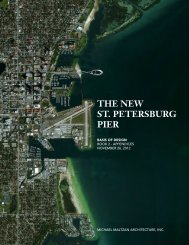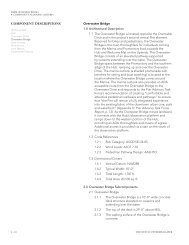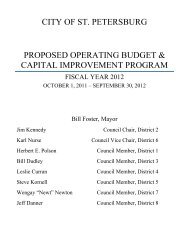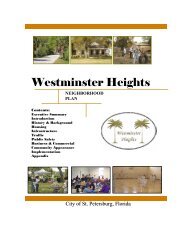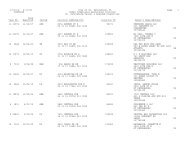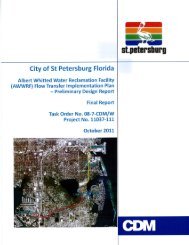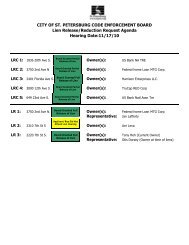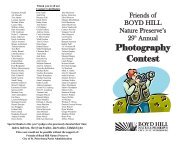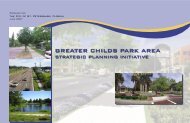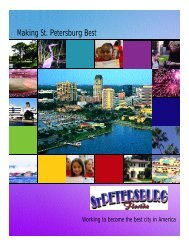Book 1 - City of St. Petersburg
Book 1 - City of St. Petersburg
Book 1 - City of St. Petersburg
Create successful ePaper yourself
Turn your PDF publications into a flip-book with our unique Google optimized e-Paper software.
BASIS OF DESIGN BOOK 1<br />
3 GENERAL PLANNING CRITERIA<br />
UNDERWATER FEATURE<br />
CRITERIA (continued)<br />
Appearance, <strong>St</strong>ructure, Materials and Research<br />
Because the structural and substrate appearance <strong>of</strong> a<br />
naturally occurring reef cannot be recreated, the design <strong>of</strong> the<br />
Underwater Feature must be developed to achieve a level <strong>of</strong><br />
marine beauty as an artificial habitat construction under 12<br />
ft. <strong>of</strong> water. Aesthetically pleasing and interesting reef forms<br />
must be created through an appropriate layout, a sectional<br />
understanding <strong>of</strong> the project, and a dimensional study.<br />
Several conceptual methods for artificial reef designs were<br />
considered. These are described in Figure 3.56:<br />
• building up by placing objects directly on the Bay<br />
bottom<br />
• building up by minimizing contact with the Bay bottom<br />
• installing new piles and suspending material from these<br />
piles<br />
• reusing existing piles and suspending material from<br />
them<br />
The majority <strong>of</strong> existing piles are planned to be demolished. The<br />
design team is willing to investigate the structural capacity <strong>of</strong> a<br />
small (approximately 20,000 sq. ft.) area <strong>of</strong> piles to determine if<br />
they can be kept in place and incorporated into an artificial reef.<br />
By keeping the existing piles in place and reinforcing them with<br />
new horizontal bracing, artificial reef balls can be suspended<br />
far enough from the bottom to allow for shadow movement.<br />
As with all conceptual artificial methods, careful research and<br />
consideration will determine appropriateness for this habitat<br />
and environment. The conceptual plans Figures 3.59 and 3.60<br />
describe the possible reuse <strong>of</strong> existing piles as a framework<br />
supporting the future Underwater Feature.<br />
A variety <strong>of</strong> materials will be studied for best suitability within<br />
existing conditions and for maximum enhancement <strong>of</strong> the<br />
habitat (Figure 3.57). Materials include limestone boulders,<br />
concrete pipe, reclaimed concrete piling and manufactured<br />
artificial reef modules among others. Limestone is preferred<br />
over concrete or other materials due to its surface, porosity,<br />
composition and pH value. Native Florida limestone boulders<br />
<strong>of</strong> varying sizes are available from Crystal River, Brooksville and<br />
other active quarries in the area. A mix <strong>of</strong> different materials such<br />
as limestone boulders, reclaimed pilings and concrete support<br />
slabs can be used in combination.<br />
With any <strong>of</strong> these conceptual methods, a natural “reference”<br />
habitat must be identified to determine the ecological goals for<br />
the Underwater Feature. Scientific studies comparing natural and<br />
manmade material for artificial reefs are available, as are studies<br />
<strong>of</strong> artificial reef habitats incorporating both.<br />
3 - 118<br />
THE NEW ST. PETERSBURG PIER




